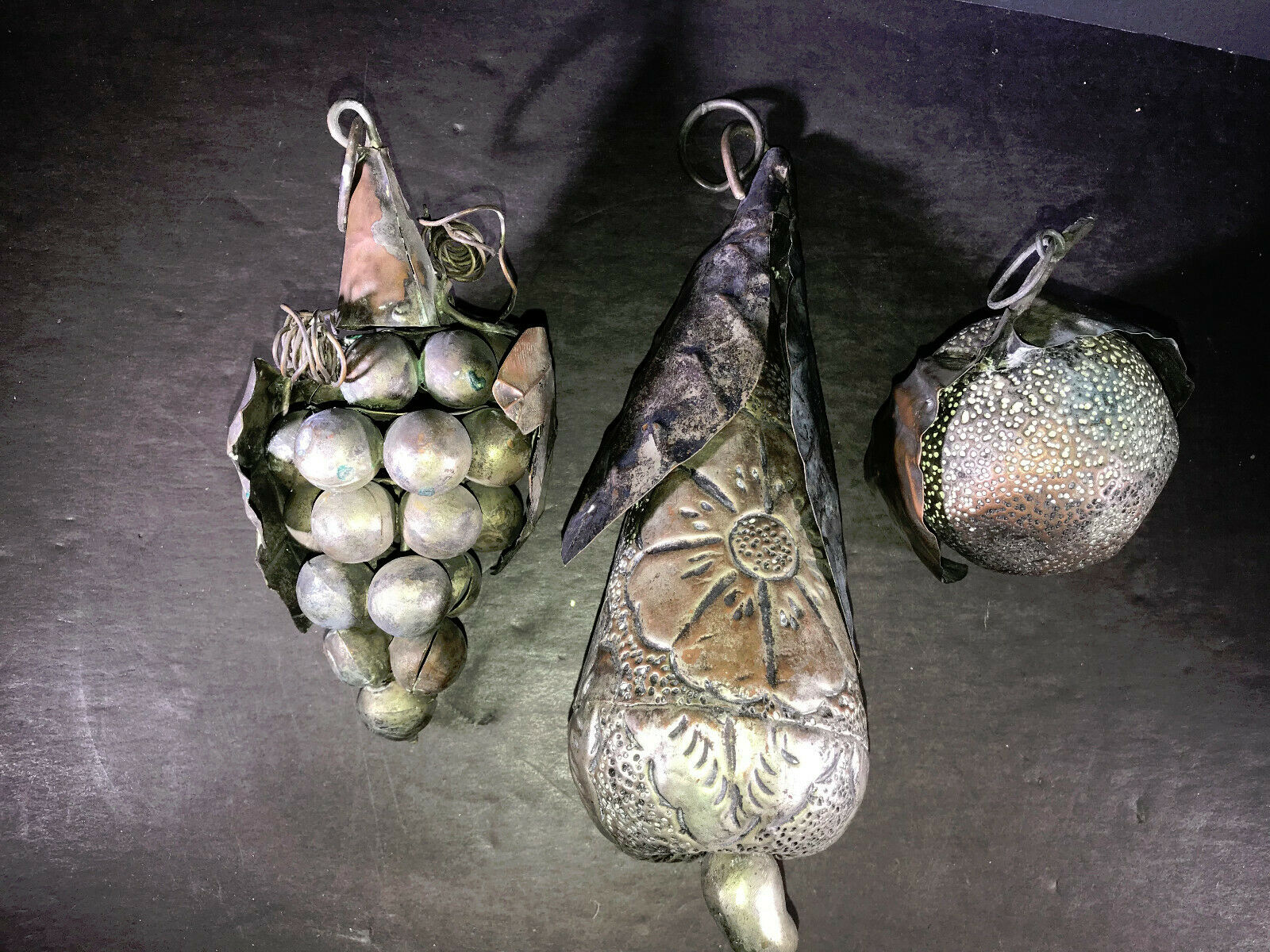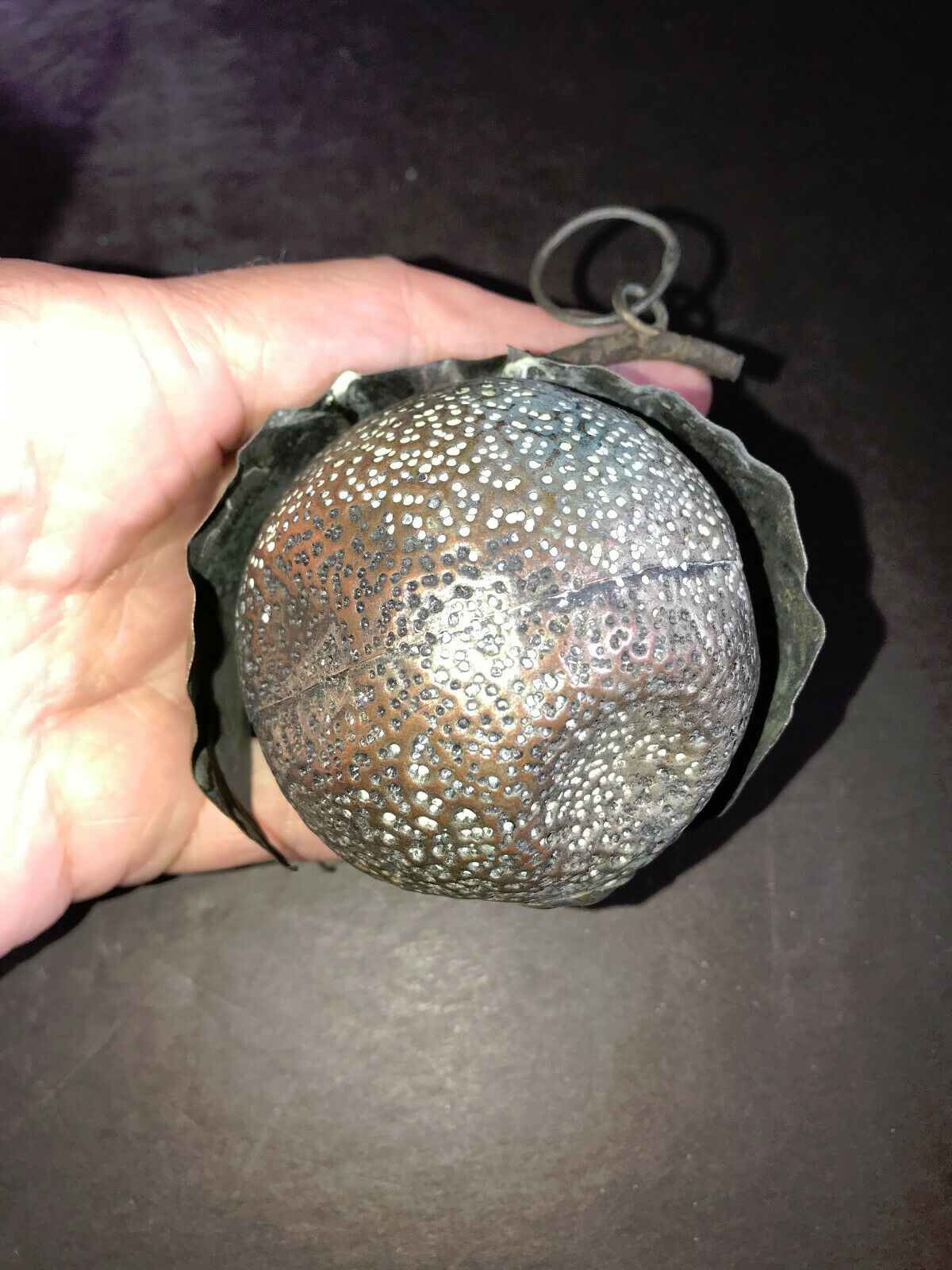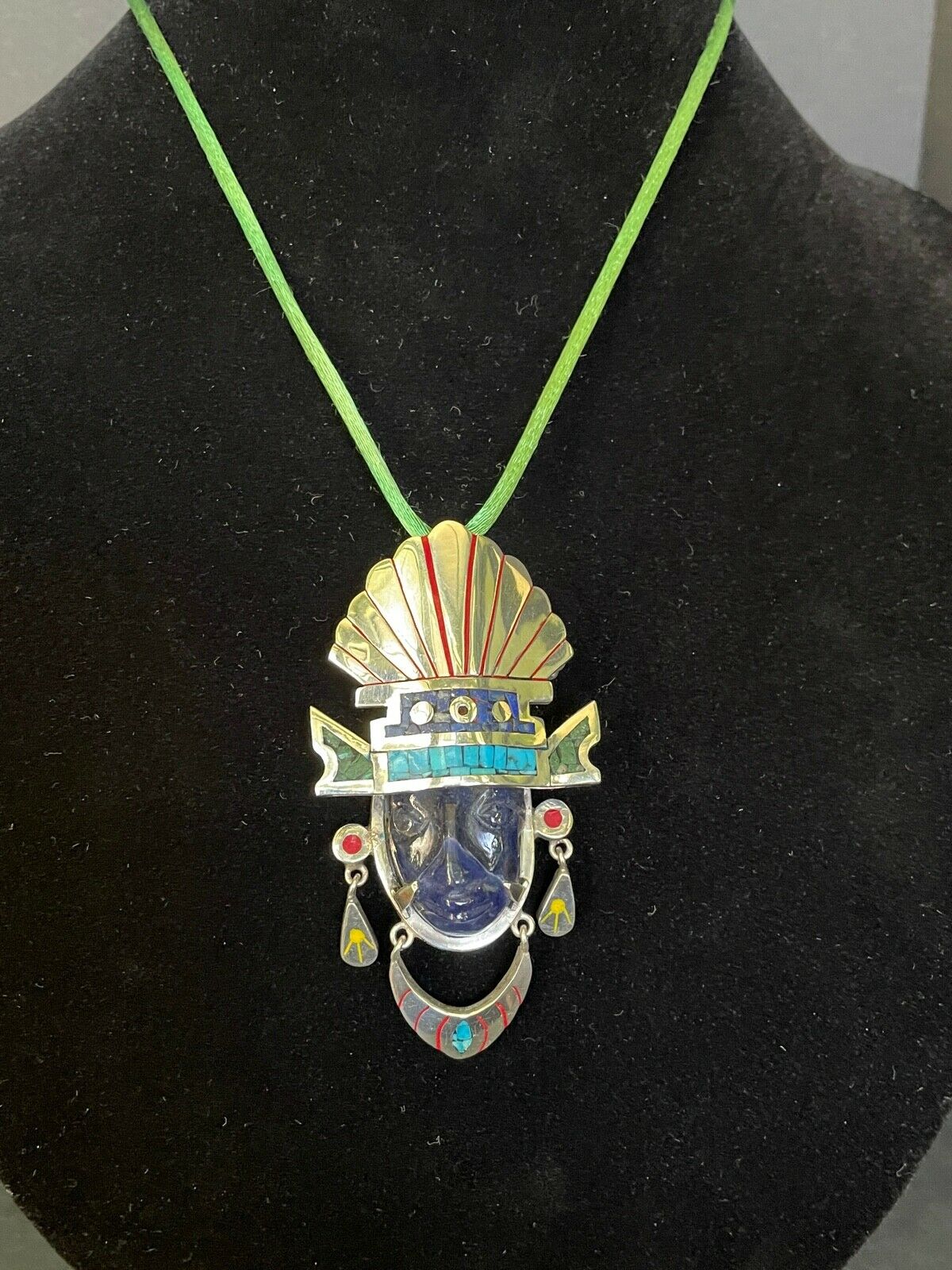-40%
VINTAGE METAL TIN FRUIT HANGING ORNAMENT ABUNDANCE PENCE DE BALANGANDAN BRAZIL
$ 5.27
- Description
- Size Guide
Description
LOT THREE (3) LARGE PIECESANTIQUE TIN / SILVER PLATE
METAL FRUIT HANGING ORNAMENT
ABUNDANCE FERTILITY
BALANGANDAN BRAZIL
You will get:
1 - Bunch of Grapes, leaves and tendrils - 7" long
1 - Large Pear with leaves - 9" long
1 - Orange with leaves and stem - 4" long
Some amulets are universal while others are deeply persona. The Afro-Brazilian amulet known as the penca de balangandan is a combination of the two. Penca means "bouquet" in Portuguese, and balangandan is an onomatopoetic word that evokes the sound of the metal charms and baubles that hang from a central fastener.
The origins of the amulet are: Consisting of a number of charms strung on a common fastener hung from a chain, the balagandan traces its roots back to the 17th century, though its more general use dates to the 18th - 19th centuries. Worn by women of African descent, the balangandan most frequently adorned the thick chain belts that hung about slaves' waists, though on special occasions, ti might be attached to the wrist. When not in use, it is hung in the house near the door. Originally made of silver, the balangandan represented a significant monetary value and was not infrequently presented by plantation owners to favored slaves. Each balangandan was unique, having been composed to reflect the specific life path of its wearer. Its charms included religious symbols that could be interpreted simultaneously as Christian in origin, or as representing certain African gods. Other charms were intended to impart good fortune, happiness, prosperity, or good health, while a third type were selected out of gratitude for, and in commemoration of, having survived some misfortune, such as an accident or illness. The function of the balangandan was in some respects similar to that of a modern charm bracelet.
These items are in ANTIQUE NEEDING CLEANING condition!



















